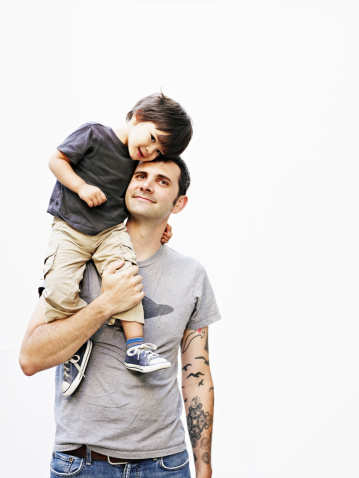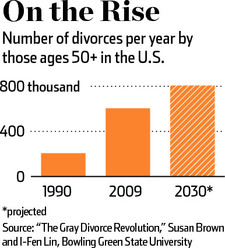 In my last post “Getting Unmarried: Gray Divorces” I wrote about the increasing number of divorces for those over the age of fifty. Also of note was how Gray Divorces have many of the same foundational issues as any divorce although there are some distinct differences. Regardless of the issues, a trained financial neutral plays a critical role in the collaborative process. Money matters can be a bed rock of tension in divorce cases. Financial issues are often cited as a major reason for marriage breakups. A financial neutral assists couples in navigating their finances. They help with the two major financial components in divorce. One is the balance sheet (list of all assets and liabilities), and two the cash flow and support.
So what does a financial neutral actually do you ask. First and foremost a financial neutral is just that – an impartial expert on financial issues. They remain unattached to any particular outcome. A good financial neutral can be worth their weight in gold when it comes to helping couples navigate money issues in divorce.
Financial neutrals help a couple gather and identify the financial information needed. I often hear from spouses the detail involved in gathering the financial information is something they have never experienced. The reason for this is all assets and liabilities, each and every one, is separately noted in the final decree so as to leave no doubt who gets what and who is responsible for what. Independent third party written documentation is needed to support each asset and liability.
This information gathering is a part of the process that can’t be short circuited. Having said this, when information gathering is completed by a financial neutral it can save spouses a considerable sum. Think about it. You are paying one professional, the financial neutral, to complete this process vs. each spouse providing the same information to each of their attorneys who in a non-collaborative divorce will have to review and assimilate all the information provided, ask questions of their clients, and then likely have to converse with the other spouse’s attorney. Financial neutrals can assimilate and organize this information in a streamlined manner with the couple’s cooperation. Usually financial neutral hourly rates are less and sometimes significantly less than attorney rates.
Once all financial information is collected and organized the financial neutral creates a marital balance sheet listing each and every asset and liability. The marital balance sheet forms the basis for discussion as to how each asset and liability is allocated between spouses. In the collaborative divorce process, couples make their own decisions about asset and liability allocations to each spouse. Couples must ultimately reach agreements on the balance sheet. The financial neutral along with each spouse’s attorney helps facilitate these discussions. The alternative in more traditional litigated divorce cases is someone else, a judge, makes decisions for the couple since they are not able to agree on their own.
Financial neutrals help spouse’s asses their ability to meet their reasonable living expenses (cash flow). This part of the process includes analyzing income sources and estimating future living expenses. Generally spouses are asked to complete some sort of budget template. In my experience both as a financial neutral and a financial planner, I find most people do not care for the term budget. I do a fair amount of public speaking and when I ask people what they think of when they hear the word budget it usually has a negative impression like restrictive or confining. I have attempted to remove the word budget from my vocabulary as a result and replaced it with cash flow or spending guide. Budgets tend to be backward looking while the words cash flow and spending guide are future oriented.
Assessing income and expenses (cash flow) provides each spouse with a realistic look at their financial security moving forward. Financial security is the number one goal I hear that each spouse wants to achieve. No one has ever told me they want financial insecurity. A realistic look at cash flow for each spouse is critical to providing the financial security they seek. Here is a phrase I have used when having cash flow discussions. If your outgo is greater than your income, then your upkeep may be your downfall. Think about that for a moment. Better yet remember it, as it will serve you well no matter your financial stage in life.
Yes the balance sheet with its listing of all assets and liabilities and the cash flow and support pieces form the two financial pillars of every divorce. Sometimes the financial issues can become very emotionally charged. A well-trained experienced collaborative financial professional along with the help of other collaborative team members can help keep spouses on track. I encourage couples to the extent possible to look at these decisions as business decisions. It’s easier said than done but in the end it usually is a business decision. I am a firm believer that each spouse and their family are far more important than any numbers on a balance sheet or cash flow report. In my book and in my work people always come first before numbers.
There are other important financial issues a financial neutral can assist with. Watch for part II of “Getting Unmarried: Money and Divorce.” There I will talk about marital and non-marital property, analyzing tax implications of various scenarios for child support and/or spousal maintenance; analyzing property and business interests, debt pay off scenarios, and comparing pros and cons of using one asset over another.
Is a collaborative divorce process right for you? If you or someone you know may be looking for a divorce alternative without court click on this link to learn more: www.collaborativelaw.org
In my last post “Getting Unmarried: Gray Divorces” I wrote about the increasing number of divorces for those over the age of fifty. Also of note was how Gray Divorces have many of the same foundational issues as any divorce although there are some distinct differences. Regardless of the issues, a trained financial neutral plays a critical role in the collaborative process. Money matters can be a bed rock of tension in divorce cases. Financial issues are often cited as a major reason for marriage breakups. A financial neutral assists couples in navigating their finances. They help with the two major financial components in divorce. One is the balance sheet (list of all assets and liabilities), and two the cash flow and support.
So what does a financial neutral actually do you ask. First and foremost a financial neutral is just that – an impartial expert on financial issues. They remain unattached to any particular outcome. A good financial neutral can be worth their weight in gold when it comes to helping couples navigate money issues in divorce.
Financial neutrals help a couple gather and identify the financial information needed. I often hear from spouses the detail involved in gathering the financial information is something they have never experienced. The reason for this is all assets and liabilities, each and every one, is separately noted in the final decree so as to leave no doubt who gets what and who is responsible for what. Independent third party written documentation is needed to support each asset and liability.
This information gathering is a part of the process that can’t be short circuited. Having said this, when information gathering is completed by a financial neutral it can save spouses a considerable sum. Think about it. You are paying one professional, the financial neutral, to complete this process vs. each spouse providing the same information to each of their attorneys who in a non-collaborative divorce will have to review and assimilate all the information provided, ask questions of their clients, and then likely have to converse with the other spouse’s attorney. Financial neutrals can assimilate and organize this information in a streamlined manner with the couple’s cooperation. Usually financial neutral hourly rates are less and sometimes significantly less than attorney rates.
Once all financial information is collected and organized the financial neutral creates a marital balance sheet listing each and every asset and liability. The marital balance sheet forms the basis for discussion as to how each asset and liability is allocated between spouses. In the collaborative divorce process, couples make their own decisions about asset and liability allocations to each spouse. Couples must ultimately reach agreements on the balance sheet. The financial neutral along with each spouse’s attorney helps facilitate these discussions. The alternative in more traditional litigated divorce cases is someone else, a judge, makes decisions for the couple since they are not able to agree on their own.
Financial neutrals help spouse’s asses their ability to meet their reasonable living expenses (cash flow). This part of the process includes analyzing income sources and estimating future living expenses. Generally spouses are asked to complete some sort of budget template. In my experience both as a financial neutral and a financial planner, I find most people do not care for the term budget. I do a fair amount of public speaking and when I ask people what they think of when they hear the word budget it usually has a negative impression like restrictive or confining. I have attempted to remove the word budget from my vocabulary as a result and replaced it with cash flow or spending guide. Budgets tend to be backward looking while the words cash flow and spending guide are future oriented.
Assessing income and expenses (cash flow) provides each spouse with a realistic look at their financial security moving forward. Financial security is the number one goal I hear that each spouse wants to achieve. No one has ever told me they want financial insecurity. A realistic look at cash flow for each spouse is critical to providing the financial security they seek. Here is a phrase I have used when having cash flow discussions. If your outgo is greater than your income, then your upkeep may be your downfall. Think about that for a moment. Better yet remember it, as it will serve you well no matter your financial stage in life.
Yes the balance sheet with its listing of all assets and liabilities and the cash flow and support pieces form the two financial pillars of every divorce. Sometimes the financial issues can become very emotionally charged. A well-trained experienced collaborative financial professional along with the help of other collaborative team members can help keep spouses on track. I encourage couples to the extent possible to look at these decisions as business decisions. It’s easier said than done but in the end it usually is a business decision. I am a firm believer that each spouse and their family are far more important than any numbers on a balance sheet or cash flow report. In my book and in my work people always come first before numbers.
There are other important financial issues a financial neutral can assist with. Watch for part II of “Getting Unmarried: Money and Divorce.” There I will talk about marital and non-marital property, analyzing tax implications of various scenarios for child support and/or spousal maintenance; analyzing property and business interests, debt pay off scenarios, and comparing pros and cons of using one asset over another.
Is a collaborative divorce process right for you? If you or someone you know may be looking for a divorce alternative without court click on this link to learn more: www.collaborativelaw.org  In my last post “Getting Unmarried: Gray Divorces” I wrote about the increasing number of divorces for those over the age of fifty. Also of note was how Gray Divorces have many of the same foundational issues as any divorce although there are some distinct differences. Regardless of the issues, a trained financial neutral plays a critical role in the collaborative process. Money matters can be a bed rock of tension in divorce cases. Financial issues are often cited as a major reason for marriage breakups. A financial neutral assists couples in navigating their finances. They help with the two major financial components in divorce. One is the balance sheet (list of all assets and liabilities), and two the cash flow and support.
So what does a financial neutral actually do you ask. First and foremost a financial neutral is just that – an impartial expert on financial issues. They remain unattached to any particular outcome. A good financial neutral can be worth their weight in gold when it comes to helping couples navigate money issues in divorce.
Financial neutrals help a couple gather and identify the financial information needed. I often hear from spouses the detail involved in gathering the financial information is something they have never experienced. The reason for this is all assets and liabilities, each and every one, is separately noted in the final decree so as to leave no doubt who gets what and who is responsible for what. Independent third party written documentation is needed to support each asset and liability.
This information gathering is a part of the process that can’t be short circuited. Having said this, when information gathering is completed by a financial neutral it can save spouses a considerable sum. Think about it. You are paying one professional, the financial neutral, to complete this process vs. each spouse providing the same information to each of their attorneys who in a non-collaborative divorce will have to review and assimilate all the information provided, ask questions of their clients, and then likely have to converse with the other spouse’s attorney. Financial neutrals can assimilate and organize this information in a streamlined manner with the couple’s cooperation. Usually financial neutral hourly rates are less and sometimes significantly less than attorney rates.
Once all financial information is collected and organized the financial neutral creates a marital balance sheet listing each and every asset and liability. The marital balance sheet forms the basis for discussion as to how each asset and liability is allocated between spouses. In the collaborative divorce process, couples make their own decisions about asset and liability allocations to each spouse. Couples must ultimately reach agreements on the balance sheet. The financial neutral along with each spouse’s attorney helps facilitate these discussions. The alternative in more traditional litigated divorce cases is someone else, a judge, makes decisions for the couple since they are not able to agree on their own.
Financial neutrals help spouse’s asses their ability to meet their reasonable living expenses (cash flow). This part of the process includes analyzing income sources and estimating future living expenses. Generally spouses are asked to complete some sort of budget template. In my experience both as a financial neutral and a financial planner, I find most people do not care for the term budget. I do a fair amount of public speaking and when I ask people what they think of when they hear the word budget it usually has a negative impression like restrictive or confining. I have attempted to remove the word budget from my vocabulary as a result and replaced it with cash flow or spending guide. Budgets tend to be backward looking while the words cash flow and spending guide are future oriented.
Assessing income and expenses (cash flow) provides each spouse with a realistic look at their financial security moving forward. Financial security is the number one goal I hear that each spouse wants to achieve. No one has ever told me they want financial insecurity. A realistic look at cash flow for each spouse is critical to providing the financial security they seek. Here is a phrase I have used when having cash flow discussions. If your outgo is greater than your income, then your upkeep may be your downfall. Think about that for a moment. Better yet remember it, as it will serve you well no matter your financial stage in life.
Yes the balance sheet with its listing of all assets and liabilities and the cash flow and support pieces form the two financial pillars of every divorce. Sometimes the financial issues can become very emotionally charged. A well-trained experienced collaborative financial professional along with the help of other collaborative team members can help keep spouses on track. I encourage couples to the extent possible to look at these decisions as business decisions. It’s easier said than done but in the end it usually is a business decision. I am a firm believer that each spouse and their family are far more important than any numbers on a balance sheet or cash flow report. In my book and in my work people always come first before numbers.
There are other important financial issues a financial neutral can assist with. Watch for part II of “Getting Unmarried: Money and Divorce.” There I will talk about marital and non-marital property, analyzing tax implications of various scenarios for child support and/or spousal maintenance; analyzing property and business interests, debt pay off scenarios, and comparing pros and cons of using one asset over another.
Is a collaborative divorce process right for you? If you or someone you know may be looking for a divorce alternative without court click on this link to learn more: www.collaborativelaw.org
In my last post “Getting Unmarried: Gray Divorces” I wrote about the increasing number of divorces for those over the age of fifty. Also of note was how Gray Divorces have many of the same foundational issues as any divorce although there are some distinct differences. Regardless of the issues, a trained financial neutral plays a critical role in the collaborative process. Money matters can be a bed rock of tension in divorce cases. Financial issues are often cited as a major reason for marriage breakups. A financial neutral assists couples in navigating their finances. They help with the two major financial components in divorce. One is the balance sheet (list of all assets and liabilities), and two the cash flow and support.
So what does a financial neutral actually do you ask. First and foremost a financial neutral is just that – an impartial expert on financial issues. They remain unattached to any particular outcome. A good financial neutral can be worth their weight in gold when it comes to helping couples navigate money issues in divorce.
Financial neutrals help a couple gather and identify the financial information needed. I often hear from spouses the detail involved in gathering the financial information is something they have never experienced. The reason for this is all assets and liabilities, each and every one, is separately noted in the final decree so as to leave no doubt who gets what and who is responsible for what. Independent third party written documentation is needed to support each asset and liability.
This information gathering is a part of the process that can’t be short circuited. Having said this, when information gathering is completed by a financial neutral it can save spouses a considerable sum. Think about it. You are paying one professional, the financial neutral, to complete this process vs. each spouse providing the same information to each of their attorneys who in a non-collaborative divorce will have to review and assimilate all the information provided, ask questions of their clients, and then likely have to converse with the other spouse’s attorney. Financial neutrals can assimilate and organize this information in a streamlined manner with the couple’s cooperation. Usually financial neutral hourly rates are less and sometimes significantly less than attorney rates.
Once all financial information is collected and organized the financial neutral creates a marital balance sheet listing each and every asset and liability. The marital balance sheet forms the basis for discussion as to how each asset and liability is allocated between spouses. In the collaborative divorce process, couples make their own decisions about asset and liability allocations to each spouse. Couples must ultimately reach agreements on the balance sheet. The financial neutral along with each spouse’s attorney helps facilitate these discussions. The alternative in more traditional litigated divorce cases is someone else, a judge, makes decisions for the couple since they are not able to agree on their own.
Financial neutrals help spouse’s asses their ability to meet their reasonable living expenses (cash flow). This part of the process includes analyzing income sources and estimating future living expenses. Generally spouses are asked to complete some sort of budget template. In my experience both as a financial neutral and a financial planner, I find most people do not care for the term budget. I do a fair amount of public speaking and when I ask people what they think of when they hear the word budget it usually has a negative impression like restrictive or confining. I have attempted to remove the word budget from my vocabulary as a result and replaced it with cash flow or spending guide. Budgets tend to be backward looking while the words cash flow and spending guide are future oriented.
Assessing income and expenses (cash flow) provides each spouse with a realistic look at their financial security moving forward. Financial security is the number one goal I hear that each spouse wants to achieve. No one has ever told me they want financial insecurity. A realistic look at cash flow for each spouse is critical to providing the financial security they seek. Here is a phrase I have used when having cash flow discussions. If your outgo is greater than your income, then your upkeep may be your downfall. Think about that for a moment. Better yet remember it, as it will serve you well no matter your financial stage in life.
Yes the balance sheet with its listing of all assets and liabilities and the cash flow and support pieces form the two financial pillars of every divorce. Sometimes the financial issues can become very emotionally charged. A well-trained experienced collaborative financial professional along with the help of other collaborative team members can help keep spouses on track. I encourage couples to the extent possible to look at these decisions as business decisions. It’s easier said than done but in the end it usually is a business decision. I am a firm believer that each spouse and their family are far more important than any numbers on a balance sheet or cash flow report. In my book and in my work people always come first before numbers.
There are other important financial issues a financial neutral can assist with. Watch for part II of “Getting Unmarried: Money and Divorce.” There I will talk about marital and non-marital property, analyzing tax implications of various scenarios for child support and/or spousal maintenance; analyzing property and business interests, debt pay off scenarios, and comparing pros and cons of using one asset over another.
Is a collaborative divorce process right for you? If you or someone you know may be looking for a divorce alternative without court click on this link to learn more: www.collaborativelaw.org 



 Recently I received a referral from Kristin, a client I represented in 2011 in her collaborative divorce. In thanking her for the referral, I took the opportunity to ask her how she was doing. With her permission, her response is reproduced below. At the time of her divorce, Kristin and her husband had two (2) children ages 10 and 12.
Hi Tonda,
Nice to hear from you. I will fill you in with some detail for examples of what can lay on the other side of divorce to help you give hope to your clients going through this painful process. Everyone is doing well here; the kids are doing really well splitting their time between our 2 households (4 miles apart).
Tom and I have a much better relationship now than when we were getting divorced. We talk several times per week and text, usually daily, mostly regarding kids’ stuff like coordinating activities/homework and just general parenting issues. We also try to meet for coffee sometimes to discuss things more in depth like holidays and vacation planning and kids’ milestones. We see each other at their basketball games, tennis matches, orchestra concerts, etc, even holidays sometimes, and usually sit together with our new spouses. Tom and I both got re-married a couple of months ago and Tom and his wife are expecting a baby in March. I married a pharmacist that I met after the divorce and we got married in Yosemite in August of this year. The four of us get along well and the kids get along well with both our spouses so I have nothing but great things to say about the collaborative process. It really helped us to avoid a lot of un-pleasantries and keep our family together without staying married, which is really great.
I hope all is well with you and your practice. I will continue to recommend people look into collaborative divorce as an option. It has been very helpful to us to use the divorce agreement as a structure, but we stay very flexible with rearranging schedules, holidays and vacations etc. We have actually never even had an argument since the divorce. It has helped us build a sense of cooperation and the
Recently I received a referral from Kristin, a client I represented in 2011 in her collaborative divorce. In thanking her for the referral, I took the opportunity to ask her how she was doing. With her permission, her response is reproduced below. At the time of her divorce, Kristin and her husband had two (2) children ages 10 and 12.
Hi Tonda,
Nice to hear from you. I will fill you in with some detail for examples of what can lay on the other side of divorce to help you give hope to your clients going through this painful process. Everyone is doing well here; the kids are doing really well splitting their time between our 2 households (4 miles apart).
Tom and I have a much better relationship now than when we were getting divorced. We talk several times per week and text, usually daily, mostly regarding kids’ stuff like coordinating activities/homework and just general parenting issues. We also try to meet for coffee sometimes to discuss things more in depth like holidays and vacation planning and kids’ milestones. We see each other at their basketball games, tennis matches, orchestra concerts, etc, even holidays sometimes, and usually sit together with our new spouses. Tom and I both got re-married a couple of months ago and Tom and his wife are expecting a baby in March. I married a pharmacist that I met after the divorce and we got married in Yosemite in August of this year. The four of us get along well and the kids get along well with both our spouses so I have nothing but great things to say about the collaborative process. It really helped us to avoid a lot of un-pleasantries and keep our family together without staying married, which is really great.
I hope all is well with you and your practice. I will continue to recommend people look into collaborative divorce as an option. It has been very helpful to us to use the divorce agreement as a structure, but we stay very flexible with rearranging schedules, holidays and vacations etc. We have actually never even had an argument since the divorce. It has helped us build a sense of cooperation and the 




